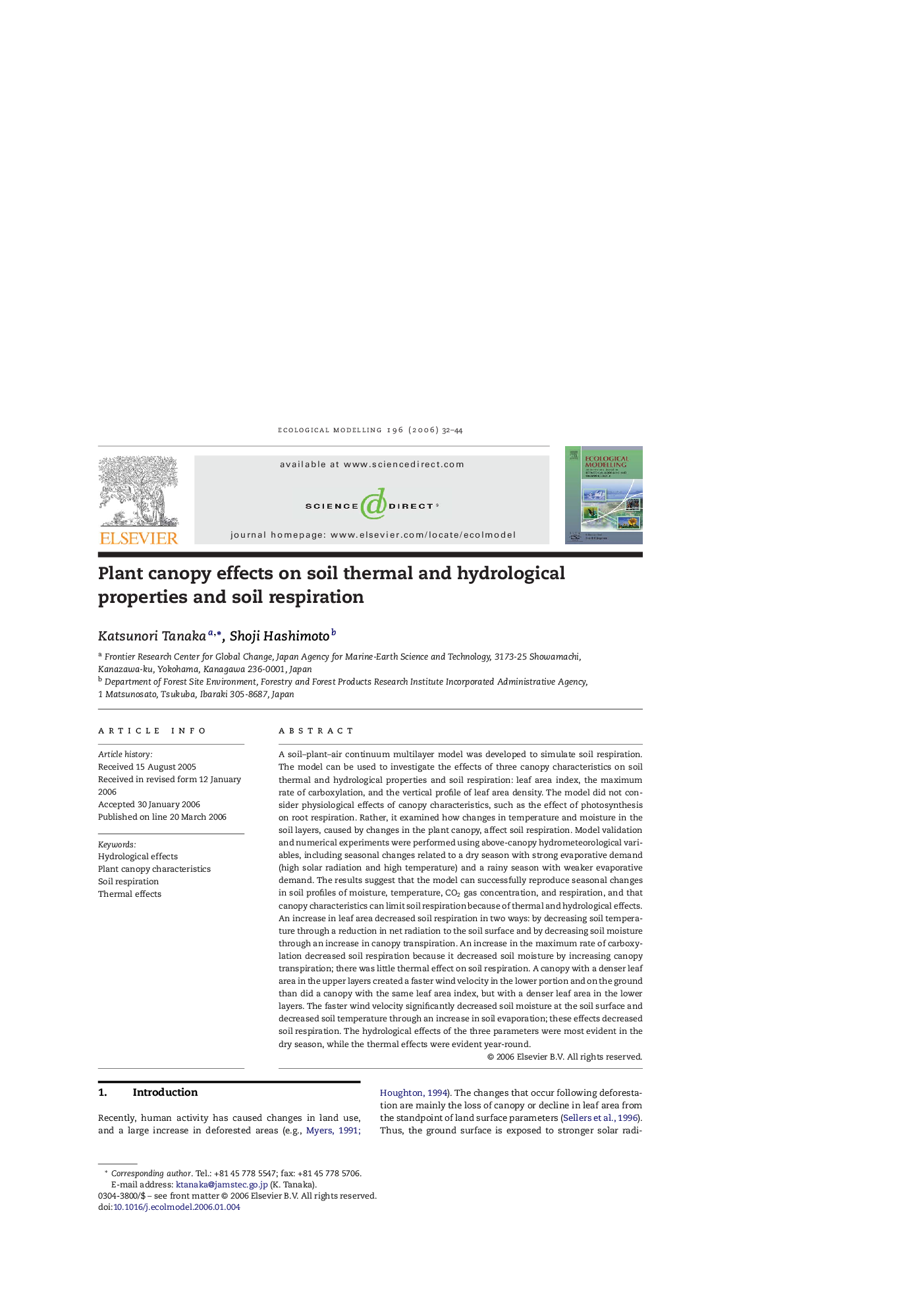| Article ID | Journal | Published Year | Pages | File Type |
|---|---|---|---|---|
| 4379030 | Ecological Modelling | 2006 | 13 Pages |
A soil–plant–air continuum multilayer model was developed to simulate soil respiration. The model can be used to investigate the effects of three canopy characteristics on soil thermal and hydrological properties and soil respiration: leaf area index, the maximum rate of carboxylation, and the vertical profile of leaf area density. The model did not consider physiological effects of canopy characteristics, such as the effect of photosynthesis on root respiration. Rather, it examined how changes in temperature and moisture in the soil layers, caused by changes in the plant canopy, affect soil respiration. Model validation and numerical experiments were performed using above-canopy hydrometeorological variables, including seasonal changes related to a dry season with strong evaporative demand (high solar radiation and high temperature) and a rainy season with weaker evaporative demand. The results suggest that the model can successfully reproduce seasonal changes in soil profiles of moisture, temperature, CO2 gas concentration, and respiration, and that canopy characteristics can limit soil respiration because of thermal and hydrological effects. An increase in leaf area decreased soil respiration in two ways: by decreasing soil temperature through a reduction in net radiation to the soil surface and by decreasing soil moisture through an increase in canopy transpiration. An increase in the maximum rate of carboxylation decreased soil respiration because it decreased soil moisture by increasing canopy transpiration; there was little thermal effect on soil respiration. A canopy with a denser leaf area in the upper layers created a faster wind velocity in the lower portion and on the ground than did a canopy with the same leaf area index, but with a denser leaf area in the lower layers. The faster wind velocity significantly decreased soil moisture at the soil surface and decreased soil temperature through an increase in soil evaporation; these effects decreased soil respiration. The hydrological effects of the three parameters were most evident in the dry season, while the thermal effects were evident year-round.
